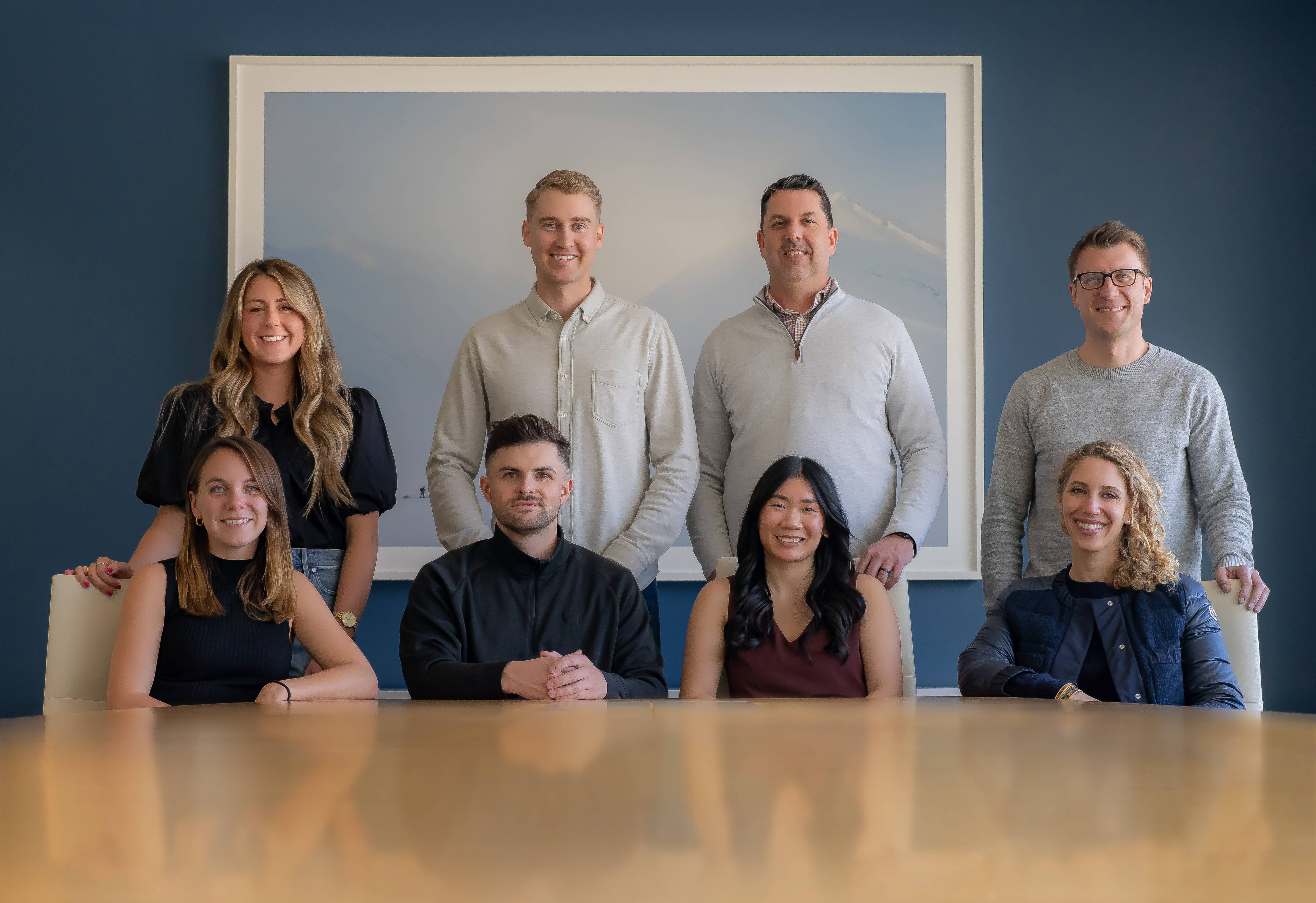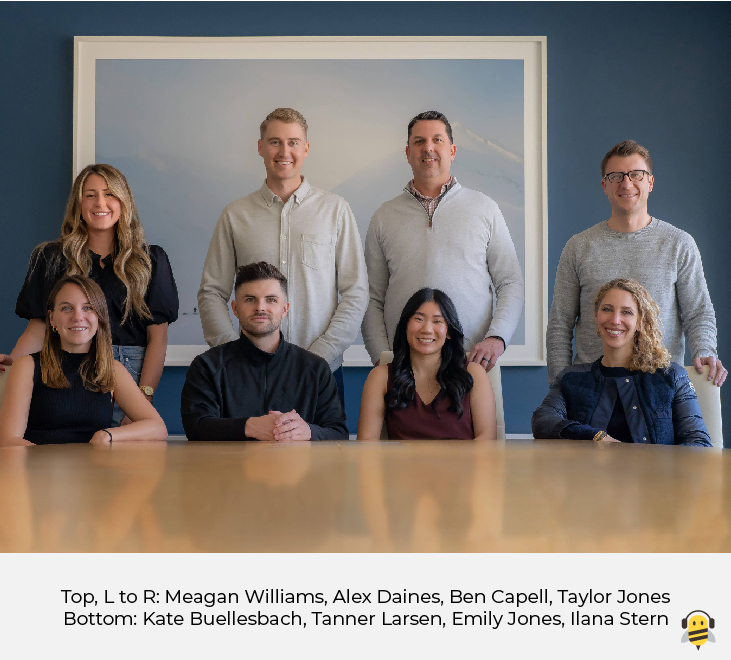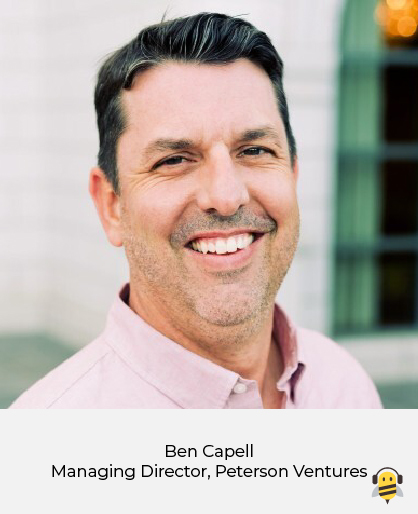

As part of our ongoing Investor Mindset series, TechBuzz sat down with Peterson Ventures (Salt Lake City) to discuss “founder enabling”—the subtle alchemy of deal sourcing, risk assessment, and curating an exceptional network of established and up-and-coming CEOs. This week, Peterson announced the launch of their new venture fund: over $140 million in new capital for its Fund IV and Opportunity Fund I. To date, this brings Peterson Ventures' managed assets to $550 million.
 Headquartered in Utah with an office in the Bay Area, Peterson Ventures is part of the Peterson Partners platform, an independent investment manager with over $1.8 billion in assets under management across a variety of alternative asset classes: Peterson Private Equity, Peterson Search, and Peterson Ventures. The firm has a decades-long history of investing in entrepreneurs in the Intermountain West and the Stanford Business School alumni network through investments like Allbirds, Ethos Life, Lucid and Nomi Health, to name a few.
Headquartered in Utah with an office in the Bay Area, Peterson Ventures is part of the Peterson Partners platform, an independent investment manager with over $1.8 billion in assets under management across a variety of alternative asset classes: Peterson Private Equity, Peterson Search, and Peterson Ventures. The firm has a decades-long history of investing in entrepreneurs in the Intermountain West and the Stanford Business School alumni network through investments like Allbirds, Ethos Life, Lucid and Nomi Health, to name a few.
Peterson Ventures focuses on pre-Series A deals in SaaS including e-commerce enablement, healthcare and future of work. In Digital Commerce the firm is focused on direct-to-consumer business models disrupting traditional distribution in e-commerce, healthcare, fintech, and consumer-enabled marketplaces.
Key to Salt Lake-based Peterson Venture’s 12-year growth track is its founder-first ethos. With a focus on removing barriers, cultivating talent, and designing strategy around client feedback and referrals, Peterson Venture’s top priority is to create optimal conditions for entrepreneurs to succeed. As Ben Capell, Managing Director, explains, “At the end of the day, being the CEO can be a lonely job. Even if you have an incredible founding team and exceptional product, so much depends on a CEO’s focus and persistence. Partnering with talented and tenacious individuals is where Peterson Ventures does its best work.”
 Capell began at Peterson Ventures in 2010 as an intern; this May will mark his twelfth year with the team. “When I joined, Peterson Ventures had just been formed and was investing off the balance sheet of Joel Peterson,” Capell explains. “The firm had been raising outside capital on the private equity side since 2000, and the idea to create a venture fund was essentially: ‘We have unique access to two growing and dynamic entrepreneurial ecosystems, is there an opportunity for us to build a fund and raise outside capital to back founders in Utah and at Stanford Business School?’”
Capell began at Peterson Ventures in 2010 as an intern; this May will mark his twelfth year with the team. “When I joined, Peterson Ventures had just been formed and was investing off the balance sheet of Joel Peterson,” Capell explains. “The firm had been raising outside capital on the private equity side since 2000, and the idea to create a venture fund was essentially: ‘We have unique access to two growing and dynamic entrepreneurial ecosystems, is there an opportunity for us to build a fund and raise outside capital to back founders in Utah and at Stanford Business School?’”
The Peterson Ventures investment team is supported by the Peterson Partners platform executive team which includes Clint Peterson, Managing Partner; Eric Noble, Chief Financial Officer and Chief Compliance Officer; and Joel Peterson, Founding Partner and Chairman. Joel Peterson has taught at the Stanford Graduate School of Business for 30 years.
“We were excited about the prospect,” he continues. “We felt the Utah ecosystem was undercapitalized, and our decades-long history with Stanford gave us unique access. We had deep insight into two ecosystems, and there was real opportunity in our network to back them. Four funds and 10 years later, it continues to drive our growth and strategy.” The firm recently doubled down on this strategy, hiring former Peterson Ventures portfolio founder Ilana Stern as a General Partner in 2019. Ilana is based in San Francisco where she is a lecturer on campus at Stanford Business School.
These are three investor insights gleaned from our TechBuzz’s two-hour discussion with Ben Capell.
Peterson Ventures Sources Most Deals on a 3x2 Thesis Matrix
As covered in previous TechBuzz Investor Mindset interviews with Album and Frazier Group, researching a private equity firm’s deal structure is essential to any startup funding strategy. While some firms prioritize product or engineering, others systemic viability—Peterson Venture’s approach is firmly rooted in founder relations. Capell first offers insight into how a CEO’s initial startup network sets the stage for their first formal contact with investors.
“We typically invest at a cross-section of two variables: geographical source and industry sector,” says Capell. “In those, we focus on Utah, Stanford Business School, and founder referrals—combined with sectors we’re interested in, such as SaaS (B2B), digital commerce (B2C), and offshoots within. We continue to refine our strategy but the key pillars have served us well.”
This industry matrix, Capell explains, cultivates fertile ground for referrals. If new founders circulate with entrepreneurs already navigating the Utah-tech fundraising gamut, they’ll acclimate well to Peterson Venture’s treatment.
It’s at this critical juncture of training and opportunity that Peterson Ventures primarily pursues a round. “Our initial investment is primarily in pre-Seed and Seed rounds,” he explains. “Every so often we'll invest in a Series A investment where we weren’t investors in the Seed round, but our initial checks are usually at the Seed stage. That’s where we knew the potential was back in 2012 and still believe it is today.
“Now that we’ve backed over 100 companies, we feel if we do a good job with the CEOs in our portfolio, they’ll send more or come back to us with a future endeavor,” he continues. “It’s really part of our ethos: We used to track how many of our founders had referred deals to us, for the last five years we’ve started doing a formal NPS survey with our founders every year. The driving question we ask ourselves is: ‘Are we delivering on the value prop founders expect when we invest? It’s our job to earn the trust of the founders we back such that they refer us to deals and come back to us to raise capital when and if they decide to found another company.”
A Founder-First Approach to Cap Tables
Here, Capell touches briefly on cap-table alignment, preferences, and investment terms.
“Cap tables should be structured for the long-term incentive of the founders and market-driven terms for future investors,” Capell explains. “When we’re investing in the Seed stage, we want a cap table structure that isn’t detrimental to the founders or to us. This means no participating liquidation preferences. Thankfully, most investors today are aware of the impact of adding structure to the cap table on the founders and early stage investors.”
Capell’s statement reflects how Peterson Ventures persistently works to future-proof its investment terms. Any interaction with entrepreneurs is set up to serve the next—Peterson’s or otherwise. “The next investor coming in has to look at that first round and say ‘Yes, this all makes sense,’” says Capell. “The last thing we want as pre-Series A investors is to create obstacles for raising more capital. That first round is so critical; it sets the precedent for all future deals to succeed.”
Capell emphasizes it’s in the best interest of everyone involved—founders, investors, consultants and board members—to ensure productive transitions. Peterson Ventures’ approach is to expect CEOs to have hard conversations about the founding team’s alignment, vesting terms, options to pool, and incentive strategy. “Founding teams don’t always work together forever,” he says. “We’ve seen four founders split equity equally, but over time that changes. Meaningful roles shift, some founders become more critical to operations, and over time equal shares are diluted and each individual isn’t as incentivized. A lot of founders think they’ve circumvented these obstacles by splitting equally, but that just kicks it further down the road. There’s no exact formula, but there are ways to go about it and setting terms to survive and build a better business long-term.”
Advice for Entrepreneurs Just Starting Down the Fundraising Path
“It sounds obvious, but when I’m sitting in a room with an aspiring or nascent CEO, I always tell them to make sure this is something you want to do,” Capell explains. “In many ways there’s never been a better time to be a founder. You have unprecedented resources, capital, and talent available—but it’s critical to be realistic about your journey. Like I said earlier: No one feels bad for the CEO, but it really can be a lonely and demanding job.”
Capell advises founders to look to their network and resources for support. “One of my mentors once told me, ‘You need to want to do it so much that if you don’t do it, part of you is missing—like an appendage,” he explains. “That’s played a big role in how I approach founder relations here. Above all, our team helps ‘business builders’ accomplish what they couldn’t live without.”
Peterson Ventures also advises founding teams to develop a fastidious understanding of their product or service, customer base, and market. “We’re always determining if a founder has a unique understanding of the problem they’re trying to solve,” Capell explains. “If the problem is hard to solve, do they have the motivation for it? If it’s easy, has someone else solved it? These questions help investors connect the dots for the present opportunity, but also where it’s going. The ultimate question we try to ask ourselves is: ‘What if this works?’ Entrepreneurs who can help us see their vision of how an industry will be fundamentally changed if they are able to overcome the many barriers that are in place for why this hasn’t been done before is what helps us get excited. When the combination of great execution, industry tailwinds, and big market opportunities come together it is a wonderful thing to behold. ”
As with their “investment matrix,” the Peterson team places founders in a rubric:
- Demonstrated success in other areas of their life. As Capell points out, this is why repeat founders are popular. “Success isn’t an accident,” he explains. “It takes dedication and purposeful effort to start a business."
- They have unique insight to solve a problem. “Founders need to tell the right story of why they have the right team to address this,” Capell explains.
- Ability to understand what’s happening now and where it’s all headed. “This means the ability to connect data points,” Capell explains. “Great storytellers don’t always make great founders. But you need a vision, why it’s important, how to present it. Bottom line, you need to convince people who, from a rational perspective, probably shouldn’t come work for you to come work for you and investors who, once again from a rational perspective, probably shouldn’t invest in you to invest in you.”
As for products and services, Capell explains the best businesses Peterson Ventures has invested in are those that fundamentally change their industries. As he puts it, “That’s the opportunity with the most impact and where we’re most excited to be on the frontline.”
Echoing his earlier advice on future-proofing investment terms, Capell frames a founder’s persistence and expertise as integral to Peterson Venture’s formula. “It’s hard enough to start a business, get traction, and keep up with fundraising,” he explains. “We try to take all those barriers away with the right deal sourcing and investment terms, but so much comes down to timing and context. The question for founders isn’t, ‘How is my company doing?’, it’s ‘How is my company doing compared to the thousand other deals I don’t know about?’ That’s where all these little drops and interactions start to watershed: Ease of terms, a great team, an exciting market, small but measurable indicators of progress, the understanding that capital will be there… All this can suddenly add up to an extraordinary breakthrough.”
Numbers-wise, Capell explains they track anywhere from 1,000 inbound deals or referrals a year, and even more with demo day presentations. From there, they’ll take formal “get to know you” meetings with companies with a few hundred. Out of that pool, they’ll typically target 8-10 deals to invest in.
Finally, Capell offers insight on the subject of revenue as a validation point. “I’ll put it this way: We’ve invested in six companies that have gone on to be worth a billion or more, and five of those were pre-revenue when we invested,” he explains. “The very nature of our work as seed stage investors is to be open to that kind of risk and vision. There’s a bias for traction—sure, we love to see it—but we’re more interested in patterns. We try to apply those patterns of investing to back management teams we’re excited about with unique problems to solve and a compelling answer to what if this works, even if they have yet to generate a dime.”

